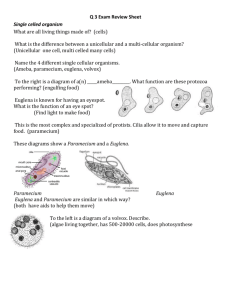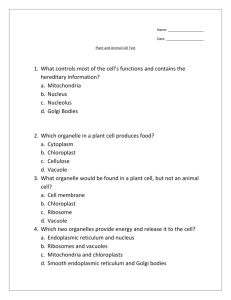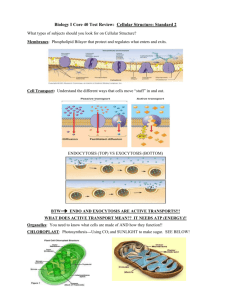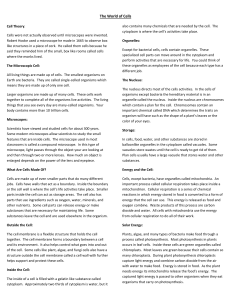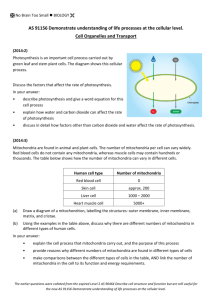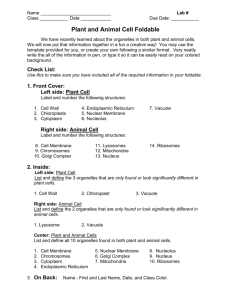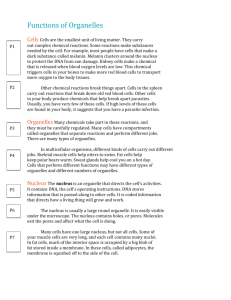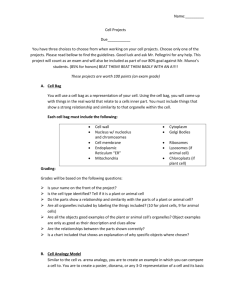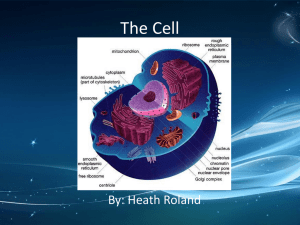Level 2 Biology - No Brain Too Small
advertisement
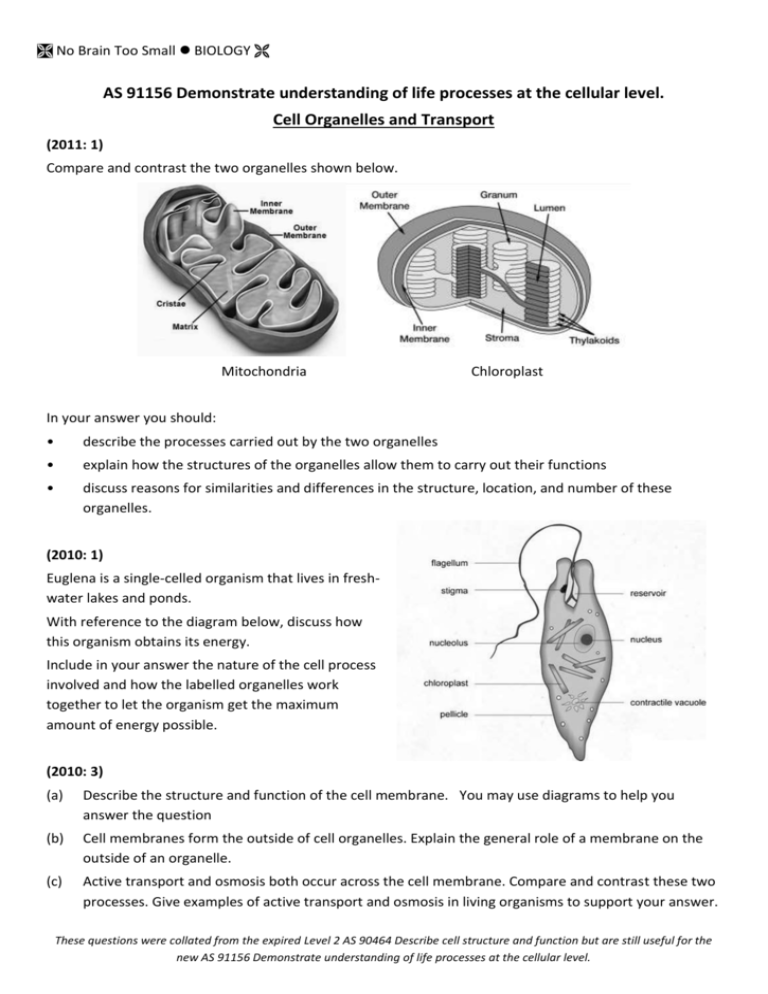
No Brain Too Small BIOLOGY AS 91156 Demonstrate understanding of life processes at the cellular level. Cell Organelles and Transport (2011: 1) Compare and contrast the two organelles shown below. Mitochondria Chloroplast In your answer you should: • describe the processes carried out by the two organelles • explain how the structures of the organelles allow them to carry out their functions • discuss reasons for similarities and differences in the structure, location, and number of these organelles. (2010: 1) Euglena is a single-celled organism that lives in freshwater lakes and ponds. With reference to the diagram below, discuss how this organism obtains its energy. Include in your answer the nature of the cell process involved and how the labelled organelles work together to let the organism get the maximum amount of energy possible. (2010: 3) (a) Describe the structure and function of the cell membrane. You may use diagrams to help you answer the question (b) Cell membranes form the outside of cell organelles. Explain the general role of a membrane on the outside of an organelle. (c) Active transport and osmosis both occur across the cell membrane. Compare and contrast these two processes. Give examples of active transport and osmosis in living organisms to support your answer. These questions were collated from the expired Level 2 AS 90464 Describe cell structure and function but are still useful for the new AS 91156 Demonstrate understanding of life processes at the cellular level. No Brain Too Small BIOLOGY (2009: 1) Mitochondria carry out an essential cell process. The number of mitochondria can be different, depending on the location and function of the cell in an organism. Relate the high number of mitochondria in some cells to their function. In your answer you should consider: • the structure of mitochondria (you may use a labelled diagram to support your answer) • the process carried out by mitochondria • the types of cells that would have the most mitochondria • the reasons for higher numbers in some cells. (2009: 3) Organisms use a variety of cellular processes for the movement of materials, including osmosis and active transport. (a) Describe the processes of osmosis and active transport. (b) Explain why the two different processes are necessary, including an example of where each may occur in an organism. (c) Compare and contrast the movement of water in and out of the cells of unicellular organisms living in freshwater and those living in saltwater environments, and discuss how unicellular organisms that live in freshwater environments regulate this movement of water. (2008: 1) The endoplasmic reticulum takes up most of the space inside the cytoplasm. Many muscle cells contain both smooth endoplasmic reticulum and rough endoplasmic reticulum. (a) Describe the main structural difference between these two types of endoplasmic reticulum. (b) Explain the function of both rough and smooth endoplasmic reticulum, and why they are both needed in muscle cells. (2008: 4) (a) Describe the purpose of photosynthesis. (b) Explain how the structure AND location of chloroplasts affect the process of photosynthesis. These questions were collated from the expired Level 2 AS 90464 Describe cell structure and function but are still useful for the new AS 91156 Demonstrate understanding of life processes at the cellular level. No Brain Too Small BIOLOGY (2008: 3) Euglena and Paramecium are single-celled organisms that live in areas of fresh water such as lakes and ponds. Both of them have a number of organelles that enable them to function and survive in their environments. Euglena Paramecium (a) The cell membrane that encloses each organism is semi-permeable. Explain the need for a semipermeable membrane. (b) Explain why unicellular organisms such as Euglena and Paramecium are restricted to being microscopic in size. (c) Single-celled organisms such as Euglena and Paramecium live in freshwater environments. Discuss the reasons why contractile vacuoles are necessary in organisms such as these. (2007:1) (a) Describe the process of diffusion. (b) The surface area of cells is important for the transfer of materials, but the surface area : volume ratio changes as a cell grows. Explain why cells can only grow to a limited size. (c) Compare the processes of osmosis and active transport, and discuss the reasons for similarities and differences. (2007: 4) Two athletes trained for different sports. One athlete trained for sprinting (100 m), and the other for endurance running (marathon). During their training, they had their muscle tissues analysed, and the number of mitochondria was found to be much higher in the endurance athlete. (a) Describe the purpose of cellular respiration. (b) Explain why there are more mitochondria found in the muscles of the endurance athlete. These questions were collated from the expired Level 2 AS 90464 Describe cell structure and function but are still useful for the new AS 91156 Demonstrate understanding of life processes at the cellular level. No Brain Too Small BIOLOGY (2006: 3) Paramecium is a common freshwater Protista, found in ponds or slowmoving streams. Discuss the relationship between osmosis and contractile vacuole activity in a Paramecium, in its freshwater environment. (2006: 5) This diagram shows a cell from the palisade layer of a leaf. Explain how the role of photosynthesis is affected by the location of the chloroplasts in a palisade layer cell. Answers will be found for Level 2 AS 90464 at http://www.nzqa.govt.nz/qualifications-standards/qualifications/ncea/subjects/biology/expired-standards/ These questions were collated from the expired Level 2 AS 90464 Describe cell structure and function but are still useful for the new AS 91156 Demonstrate understanding of life processes at the cellular level.
